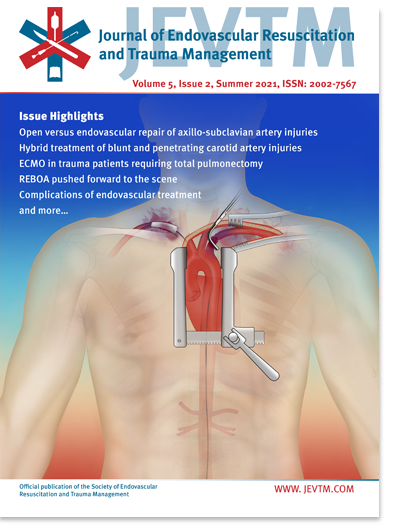REBOA-Assisted Resuscitation in Non-Traumatic Cardiac Arrest due to Massive Pulmonary Embolism: A Case Report with Physiological and Practical Reflections
DOI:
https://doi.org/10.26676/jevtm.v5i2.196Keywords:
REBOA, Cardiac Arrest, Resuscitation, Endovascular TechniquesAbstract
We present the case of a 36-year-old woman who suffered from and ultimately did not survive a non-traumatic out-of-hospital cardiac arrest (NTCA) likely due to massive pulmonary embolism. The resuscitation attempt included the use of a resuscitative endovascular balloon occlusion of the aorta (REBOA) catheter which resulted in a return of spontaneous circulation and distinct improvements in arterial blood pressure, end-tidal CO2 and cerebral oximetry values. This suggests that the use of REBOA has the physiological basis and potential to improve the rate of both survival and favorable neurologic outcome and warrants further study.
Published
How to Cite
Issue
Section
License
Copyright (c) 2021 Journal of Endovascular Resuscitation and Trauma Management

This work is licensed under a Creative Commons Attribution 4.0 International License.
Authors of content published in the JEVTM retain the copyright to their works.
Articles in the JEVTM are published under the terms of a Creative Commons CC BY 4.0 license, which permits use, downloading, distribution, linking to and reproduction in any medium, provided the original work is properly cited.




